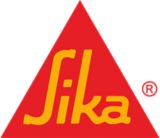IMPORTANT
Unrolling at low temperatures
At low temperatures, the membrane becomes less flexible.
- Be careful when unrolling to avoid damaging the membrane.
IMPORTANT
Damage through footwear
Footwear with spikes or sharp protrusions may puncture the membrane.
- Use footwear with a flat profile when walking over the membrane.
IMPORTANT
Application at less than +5 °C
When applying the membranes at temperatures lower than +5 °C, use heating equipment to ensure that the substrate temperature is within the given temperature range.
IMPORTANT
Application in humid/wet conditions
When applying the membranes in wet or humid conditions, use heating equipment to ensure that the substrate is dry before application.
Seasonal symbol
Note: If a seasonal symbol is printed on the roll’s label, it is advisable to use the membrane during the indicated season.
Tackiness at high temperatures
Note: When laying the membrane at high temperatures, the integral adhesive will become 'tacky' and may restrict laying operations.
ALIGNMENT
IMPORTANT
Avoid coinciding joints
To avoid coinciding joints, lay the membranes parallel to one another. When applying on another bituminous membrane, make sure to stagger the overlaps of the previous layer.
- Unroll the membrane.
- Align the membrane.
- Re-roll the membrane before application.
MEMBRANE OVERLAPS
- Overlap the membranes by a minimum of 100 mm on the sides and 150 mm on each end or as specified by the user.
- At the end overlap, cut off a corner measuring 50 mm per side at an angle of 45°.
Note: The membrane comes with a pre-designed 100 mm selvedge for overlapping at longitudinal joints. Pre-mark 150 mm (no selvedge provided) in the transverse direction of the membrane already fixed.
SELF-ADHESIVE BONDING
IMPORTANT
Do not create counter-gradient overlaps.
- At one end of the sheet, peel away part of the release liner from the underside and bond this end to the substrate.
- Continue to peel away the release liner sideways from the rest of the sheet membrane and bond it to the substrate.
- Roll the entire surface area of the applied membrane with a heavy roller to ensure any air bubbles are removed.
DETAILING
- Use a sharp knife to cut in all details such as internal and external corners, upstands, vent pipes, drains, support metalwork etc.
Refer to the relevant method statement for further information on detailing.
PROTECTION
- The membrane must be protected from damage during any ongoing site activities or for exposure to environment soon after installation. Suitable protection materials are protection sheet, geotextile, drainage boards, protective screed, etc.
